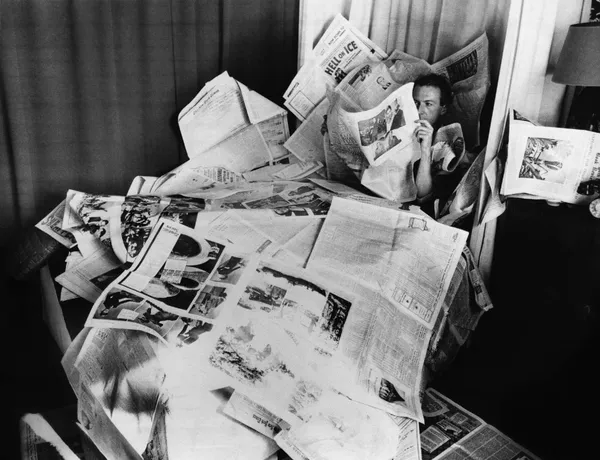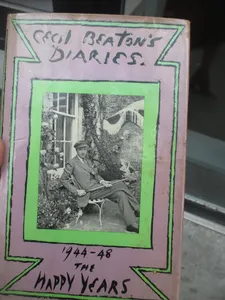On-camera interviews with David Hockney, Leslie Caron on Vincente Minnelli's Gigi, Isaac Mizrahi, Hamish Bowles, Manolo Blahnik, David Bailey and Penelope Tree, and terrific archival footage that includes George Cukor on My Fair Lady, Truman Capote and Diana Vreeland on their take on Cecil Beaton, are skilfully combined to show us a great deal about the photographer, costume and set designer and his complicated personal life, that included a marriage proposal to Greta Garbo.
Lisa Immordino Vreeland, the director of Peggy Guggenheim: Art Addict and Diana Vreeland: The Eye Has To Travel, in her latest documentary, Love, Cecil, shot by Shane Sigler (Elaine Stritch: Just Shoot Me), edited by Bernadine Colish (Absolute Wilson), and narrated by Rupert Everett, takes us on a journey with the remarkable man who won Best Costume Design Oscars for Gigi and My Fair Lady (plus a Best Art Direction Oscar), and Costume Design Tony Awards for Quadrille, My Fair Lady, Saratoga, and Coco, in which Katharine Hepburn portrayed Coco Chanel.
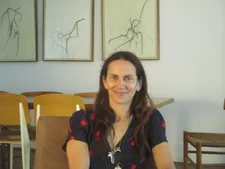 |
| Lisa Immordino Vreeland on Pavel Tchelitchew's friendly advice to Cecil Beaton: "You know, you should turn your camera upside down." Photo: Anne-Katrin Titze |
At Lisa Immordino Vreeland's home in New York our Love, Cecil conversation took us to the Cecil Beaton archives at St. John's College, Cambridge, Hamish Bowles's extraordinary participation in the documentary, David Hockney, a Greta Garbo diary entry, David Bailey's Beaton By Bailey, and Lisa's visit with cinematographer Shane Sigler to Ashcombe, where they put artist and set and costume designer Pavel Tchelitchew's advice to Beaton into action, by turning the world upside down.
Anne-Katrin Titze: The beginning - "My profession, I wish I knew." - is a great way to start a film about a man like him. Because he has done so many different things. For this documentary it must have been more trouble figuring out what to leave out.
Lisa Immordino Vreeland: Well, exactly. I think it certainly was because in the case of Beaton … In the Fifties there were all these Ladies' Clubs throughout America. A lot of them still exist. But he was asked to do this lecture tour. They're not published lectures but I happened to find them in my research in files at St. John's. And he says, you know, "What am I in fact?" Going in, he was just kind of reassessing his whole life.
And for me the impetus to make the film, it was about creativity. It was something that he was born with. That he just needed to create on multiple platforms. He's known as a photographer but he was so much more than that. That's what I'm hoping this film is going to tell the world.
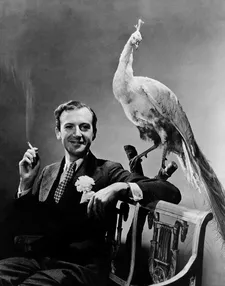 |
| Cecil Beaton in New York in the 1930s Photo: Cecil Beaton Studio Archive at Sotheby's |
For me he was kind of a conduit for us now. A conduit of the 20th century. From the way that he was photographing people and also writing about people - we really could see what the 20th century was about through all his work.
AKT: That's very true. I noticed, although I knew his photography before, how many photos are upside-down. How he likes the upside-down-ness of things. You can detect certain patterns, I never really realized were in his work. The [outlines of] hands in the bathroom and then he has a picture of that [with the hands around Katharine Hepburn's face]. There are things he liked to return to.
LIV: What's interesting, you know, Pavel Tchelitchew, not many people know who he is. These are these things when you're doing research, you kind of hone in on certain things. That Tchelitchew, who he was friends with said "You know, you should turn your camera upside down." And we put that in the film.
And I remember going with Shane Sigler, our DP, and we were at Ashcombe and he was just kind of flipping the camera, this heavy camera, upside down. Of course we could have just taken the still shot and just flipped it in the edit. But I was like, "No, I want to see the motion." I love these odd little things. He said "If you look at the world upside down you'll see different things."
AKT: Which is very true.
LIV: Which is very very true. We have to think there's an aspect of Beaton that was very traditional and then another side. Because he did come from this middle-class family, not upper-middle-class enough. For him his goal was to attain a certain social status.
You have this side to him that was very English. He had to nod to royalty and this social class that he really grew up in. Then there was this other side, which was the Bright Young Things side and this creative strain. He was always kind of on the go, on the make to create.
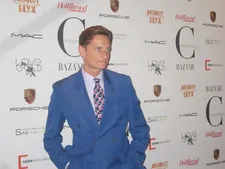 |
| Lisa Immordino Vreeland on Hamish Bowles: "You know, when Beaton's things went up for sale, he was actually there. He bought some things." Photo: Anne-Katrin Titze |
AKT: Because the insecurity, and he admits it, never really ended.
LIV: It never ended but he had this ambition that he just never gave up on. To be five or six years old and start to manipulate the story of your mother and sisters that they came from a certain class. Then he was sending the pictures of them in to different social magazines. It's not what a normal 5 or 6-year-old would think of.
AKT: No. Maybe Hamish Bowles.
LIV: Hamish was definitely out collecting. You know, when Beaton's things went up for sale, he was actually there. He bought some things.
AKT: That doesn't surprise me at all. He is a fantastic interview.
LIV: He's amazing. One of the funniest things, well it wasn't that funny. His home, his apartment is down on lower 5th [Avenue]. He lives in this apartment building and it's this fantastic apartment but it happens to be by the big AC units. And you could hear it in the interview. And for the final bit we're in the edit room and I said "This sounds horrible." I said "Oh my gosh, I got to find him."
So I sent him a text, and he goes "I just got out of the Midtown Tunnel, heading to the airport to go to Greece." He goes "I'm turning around." And he came back. He said "How much do you need me for?" I said "I need you for half an hour." And what we did was we just had him repeat the lines that were already in the film. This is also incredible on his part that he did that.
AKT: It's a wonderful way he phrases it that he wanted to insert himself in the picture on the bridge. And how he put into words something about My Fair Lady. I always knew something bothered me about My Fair Lady. And he [Hamish Bowles] expresses it perfectly. It's the Sixties eye makeup.
LIV: Yes, I agree.
AKT: The whole Greta Garbo story with Beaton is, of course, fascinating. I have just been re-reading his diary of that time. [I take the copy of Cecil Beaton's Diaries 1944 - 48 The Happy Years out of my bag]
LIV: I know, that's great. You have an older copy. You have the copy that I have.
AKT: I bought it years and years and years ago. And on my way here, by chance, I looked at December 26, 1947. It's snowing outside.
LIV [looking at the book with me]: "Il neige." Oh is this where they go for a walk in Central Park?
AKT: They did go for a walk on the previous page.
LIV: This is one of the many books that I read.
AKT: They did go for a walk and then Greta comes by and he invited a dozen friends. Just how he is phrasing it! "I wondered if Greta herself would come. Yet I knew in my heart she would arrive, for she enjoys violence in the elements: storms and blizzards excite her." I love that kind of writing.
LIV: It's all very cinematic, all those descriptions. This was such an obsession of his that really made no sense. Because as we know he did prefer men and she was one of those attainable things for him. And it was yet just another notch on his belt. I mean, did he love her? He wrote so many letters. Remember the good old carbon paper?
And he kept copies of all those letters. And they're all at St. John's. And yes, I could read them if I want to. I really didn't want to at this point because you just didn't need more than that. It's this fascination of things that he couldn't get that he wanted to have under his control. But she was not an easy human being. She was real tough. And not the right fit for him anyway.
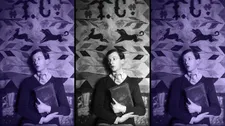 |
| Cecil Beaton self portrait, Cambridge, late 1910s Photo: Cecil Beaton Studio Archive at Sotheby's |
AKT: She and the two men he loved whose photographs …
LIV: But his love life was sacrificed for everything. Hockney was two generations after. And he came out as a young boy to his family. He embraced being gay. And his love life was a huge part of his life. For Beaton it was just impossible. It wasn't the thing that he felt comfortable doing.
AKT: I liked the segment about the enemies.
LIV: I know, Katharine Hepburn, oh my gosh.
AKT: The Diana Vreeland Truman Capote conversation is a wonderful way to set this up. Did you have that clip already set aside in your head since you made the Vreeland film?
LIV: The Beaton By Bailey film - have you seen it?
AKT: I haven't.
LIV: It's on YouTube. Have you seen the other three that he did? Bailey On Visconti and Bailey On Warhol.
AKT: I've seen only the Visconti one.
LIV: You should see the one on Warhol. Bailey was something else. He was supposed to do a slew of these. He was supposed to do one on Vreeland. But he had an issue. He didn't direct them, he kind of produced them. I don't know what the deal was. But I love this one on Beaton. And it was really important for us to use it. It was fundamental for the Sixties.
Coming up - Lisa Immordino Vreeland on the Cecil Beaton connections to Rupert Everett and Robin Muir, Leslie Caron and Gigi, George Cukor and My Fair Lady, Timothy White, and what's next in store for the Love, Cecil director.
Love, Cecil opens in the US on June 29.








